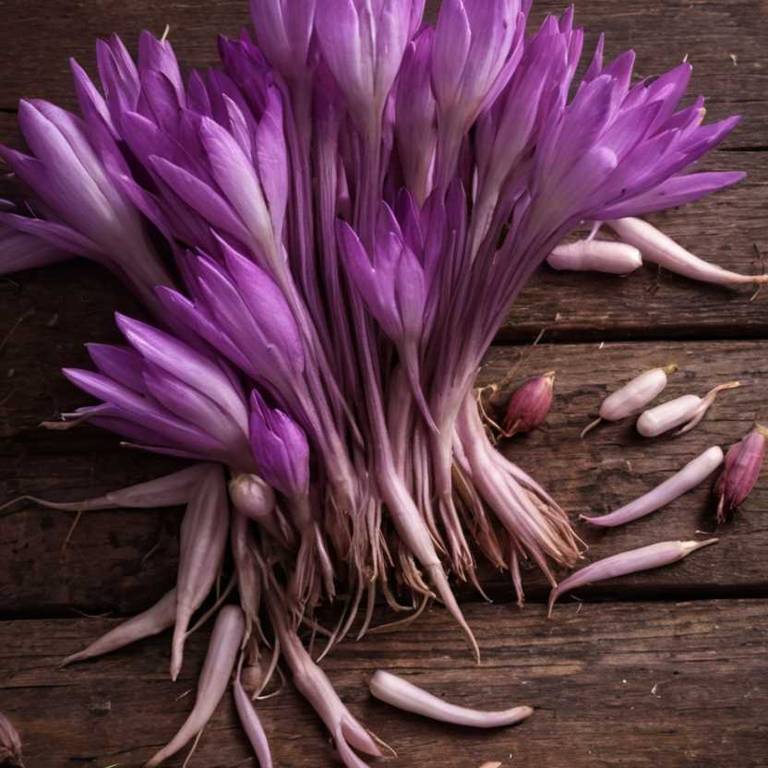Colchicum Autumnale: What To Know Before Using It For Medicinal Purposes

Colchicum autumnale, commonly known as the meadow saffron or death candelabra, has a long history of medicinal use, primarily for its alkaloid content, colchicine.
This compound has been traditionally used to treat gout and inflammatory conditions due to its ability to inhibit cell division and reduce inflammation. However, it is highly toxic and can cause severe side effects, including nausea, vomiting, and even organ failure if not used with caution. Despite its dangers, colchicine derived from Colchicum autumnale remains an essential medication in modern medicine for certain rheumatic diseases.
Its complex pharmacological properties continue to make it a subject of research for potential new therapeutic applications.
Health Benefits
Colchicum autumnale has several health benefits, such as its potential anti-inflammatory and analgesic properties that may help alleviate symptoms of gout and arthritis.
It contains alkaloids that can inhibit the formation of urate crystals, which are a primary cause of gout flare-ups. However, it is important to note that Colchicum autumnale is toxic and should only be used under strict medical supervision due to its potential for severe side effects. Despite its medicinal uses, it is not recommended for general use without professional guidance.
Its historical use in traditional medicine highlights its complex role in both therapeutic and toxic contexts.
10 Best Health Beneift of Colchicum autumnale
Bioactive Constituents
Colchicum autumnale has several bioactive constituents, such as colchicine, which is the primary alkaloid responsible for its pharmacological activity.
Colchicine exerts its effects by inhibiting microtubule polymerization, thereby interfering with cell division and mitosis. This property makes it effective in treating gout and inflammatory conditions like familial Mediterranean fever. Additionally, other alkaloids present in Colchicum autumnale, such as narciclasine and autumnaline, may contribute to its therapeutic potential through mechanisms involving immune modulation and anti-inflammatory responses.
However, due to its high toxicity, the use of Colchicum autumnale in medicinal applications is highly regulated and requires careful dosing.
Medicinal Preparations
Colchicum autumnale has several medicinal preparations, such as teas, tinctures, and extracts, that have been historically used for their therapeutic properties.
Traditionally, the plant's tubers were decocted into a tea to treat gout and rheumatism due to their anti-inflammatory effects. Tinctures made from the dried plant material are sometimes used in alternative medicine for their purported ability to reduce pain and swelling. However, these preparations are highly toxic and require careful handling to avoid serious side effects.
Due to its potent and dangerous nature, Colchicum autumnale is now primarily used under strict medical supervision for specific conditions like gout.
Side Effects
Colchicum autumnale can have some side effects, such as gastrointestinal disturbances including nausea, vomiting, and diarrhea.
In higher doses, it may lead to severe symptoms like abdominal pain, muscle weakness, and even paralysis due to its toxic alkaloids. Prolonged use or overdose can result in kidney failure, liver damage, and in extreme cases, death. The plant is particularly dangerous if ingested by children or pets, as even small amounts can be lethal.
Due to these risks, Colchicum autumnale should only be used under strict medical supervision.